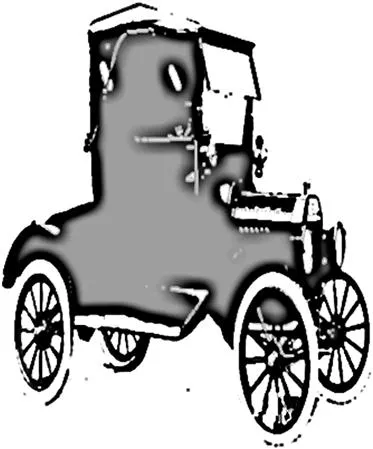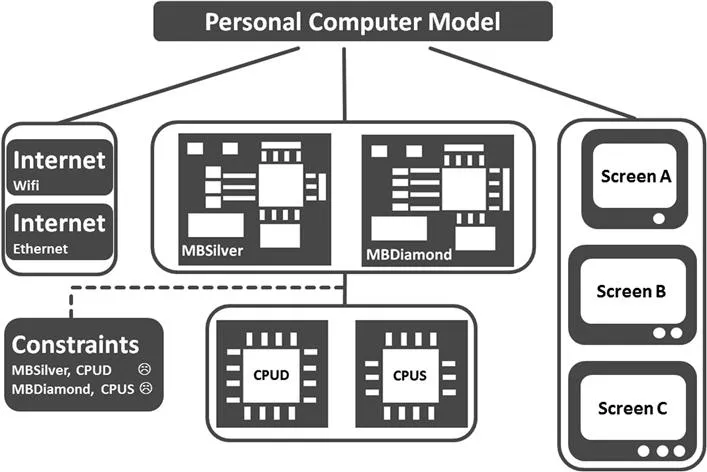
eBook - ePub
Knowledge-Based Configuration
From Research to Business Cases
- 384 pages
- English
- ePUB (mobile friendly)
- Available on iOS & Android
eBook - ePub
Knowledge-Based Configuration
From Research to Business Cases
About this book
Knowledge-based Configuration incorporates knowledge representation formalisms to capture complex product models and reasoning methods to provide intelligent interactive behavior with the user. This book represents the first time that corporate and academic worlds collaborate integrating research and commercial benefits of knowledge-based configuration. Foundational interdisciplinary material is provided for composing models from increasingly complex products and services. Case studies, the latest research, and graphical knowledge representations that increase understanding of knowledge-based configuration provide a toolkit to continue to push the boundaries of what configurators can do and how they enable companies and customers to thrive.
- Includes detailed discussion of state-of-the art configuration knowledge engineering approaches such as automated testing and debugging, redundancy detection, and conflict management
- Provides an overview of the application of knowledge-based configuration technologies in the form of real-world case studies from SAP, Siemens, Kapsch, and more
- Explores the commercial benefits of knowledge-based configuration technologies to business sectors from services to industrial equipment
- Uses concepts that are based on an example personal computer configuration knowledge base that is represented in an UML-based graphical language
Frequently asked questions
Yes, you can cancel anytime from the Subscription tab in your account settings on the Perlego website. Your subscription will stay active until the end of your current billing period. Learn how to cancel your subscription.
At the moment all of our mobile-responsive ePub books are available to download via the app. Most of our PDFs are also available to download and we're working on making the final remaining ones downloadable now. Learn more here.
Perlego offers two plans: Essential and Complete
- Essential is ideal for learners and professionals who enjoy exploring a wide range of subjects. Access the Essential Library with 800,000+ trusted titles and best-sellers across business, personal growth, and the humanities. Includes unlimited reading time and Standard Read Aloud voice.
- Complete: Perfect for advanced learners and researchers needing full, unrestricted access. Unlock 1.4M+ books across hundreds of subjects, including academic and specialized titles. The Complete Plan also includes advanced features like Premium Read Aloud and Research Assistant.
We are an online textbook subscription service, where you can get access to an entire online library for less than the price of a single book per month. With over 1 million books across 1000+ topics, we’ve got you covered! Learn more here.
Look out for the read-aloud symbol on your next book to see if you can listen to it. The read-aloud tool reads text aloud for you, highlighting the text as it is being read. You can pause it, speed it up and slow it down. Learn more here.
Yes! You can use the Perlego app on both iOS or Android devices to read anytime, anywhere — even offline. Perfect for commutes or when you’re on the go.
Please note we cannot support devices running on iOS 13 and Android 7 or earlier. Learn more about using the app.
Please note we cannot support devices running on iOS 13 and Android 7 or earlier. Learn more about using the app.
Yes, you can access Knowledge-Based Configuration by Alexander Felfernig,Lothar Hotz,Claire Bagley,Juha Tiihonen in PDF and/or ePUB format, as well as other popular books in Computer Science & Artificial Intelligence (AI) & Semantics. We have over one million books available in our catalogue for you to explore.
Information
Part 1: Introduction
Outline
Chapter 1
Motivation for the Book
Alexander Felferniga, Lothar Hotzb, Claire Bagleyc and Juha Tiihonend, aGraz University of Technology, Graz, Austria, bHITeC e.V., University of Hamburg, Hamburg, Germany, cOracle Corporation, Burlington, MA, USA, dAalto University, Aalto, Finland
Abstract
Welcome to this book on configuration systems! The purpose of this book is to expose the reader to a field of Artificial Intelligence that has been successfully integrated and used in the industry for more than 30 years. This book provides configuration-related material for interested readers from the fields of industry, education, and research.
Keywords
Knowledge-based Configuration; Motivation
1.1 What Is Configuration?
This part of the book starts with a motivation, takes a look at historical developments (Chapter 2), related technological issues (Chapter 3), and commercial benefits (Chapter 4). Chapter 5 provides an overview of the organization of the book.
Mass Production. In the first part of the last century, Henry Ford introduced the T model (see Figure 1.1) and revolutionized the way cars were manufactured by introducing the concept of mass production, which is the efficient production of a high number of identical products. One of the best characterizations of mass production was given by Ford himself: You can have any car color as long as it’s black (remark about T model in 1909).

Mass Customization. In the meantime, the mass production of identical products is a business model of the past since buyer markets predominate. This situation imposes new challenges on production and sales processes since companies are now forced to provide products that meet the individual needs of their customers. As a consequence, the mass customization paradigm (Anderson and Pine, 1996; Pine, 1999) has been established. This paradigm is based on the idea of the customer-individual production of highly variant products under near mass production pricing conditions. This means that the major goal was not only to perform a paradigm shift to more intensively take into account customer requirements and preferences but also to achieve this goal under mass production level time and pricing conditions. The era of mass customization ringed the bell for technological developments urgently needed to effectively implement the paradigm. Configuration technologies have evolved into a leading technology to support mass customization business scenarios.
Knowledge-based Configuration. One definition of configuration (as an activity) has been given by Sabin and Weigel (1998), who define configuration as “a special case of design activity where the artifact being configured is assembled from instances of a fixed set of well defined component types which can be composed conforming to a set of constraints.” Component types are further characterized by attributes and represent sets of alternative components (instances); for example, a Motherboard can be either an MBSilver or an MBDiamond (see Figure 1.2); an attribute of a Motherboard is price. Components are related to each other via part–whole relationships (also denoted as aggregations, e.g., a CPU is part of a Motherboard) or generalization relationships (also denoted as taxonomies, e.g., MBSilver is a Motherboard). In Sabin and Weigel’s definition, configuration is typically knowledge-based (knowledge-based configuration) since it relies on product domain and problem-solving knowledge.

Constraints are restricting the way in which different components can be combined with each other; for example, an MBSilver must not be combined with a CPUD. Component types and constraints are also known as configuration model. Configuration models are needed due to the fact that in many cases there is a huge number of possible configurations. If we would store each individual solution, for example, in a database, searching for the preferred solution would be an extremely time-consuming task (Falkner et al., 2011); in addition, maintaining the set of different solutions would also be extremely time-consuming. The process of developing a configuration model is known as knowledge acquisition process. In the case that a customer is interested in a personal computer, his/her requirements have to be taken into account; for example, the customer prefers to have a motherboard of type MBSilver. The union of a configuration model and a corresponding set of customer requirements is known as configuration task (Mittal and Frayman, 1989). The configuration task then is the input for a configuration system (configurator) that determines a configuration (see, e.g., Figure 1.3). A configuration environment can be seen as the union of a configurator and the associated knowledge acquisition and maintenance component. As may have been observed by the reader, the term configuration is overloaded since it represents both the process of generating an artifact, which is comprised of instances of component types, and the artifact itself, the outcome of a configuration process, which for example, can be a bill of material (BoM).

1.2 Why Use Configuration Technologies?
A short answer to this question is that configuration technologies significantly reduce the development and maintenance costs of key functionalities needed for the implementation of the mass customization paradigm. These functionalities encompass the efficient development and maintenance of constraint sets (configuration knowledge bases), the development and maintenance of configurator user interfaces, and the integration of configurators into existing software environments such as ERP (Enterprise Resource Planning) systems and systems supporting product data management (PDM). For a more detailed discussion of the commercial benefits of configuration technologies, refer to Chapter 4 of this book.
Persons involved in a configurator project (stakeholders). Persons responsible for the development of a configurator application (or parts of it) are denoted as knowledge engineers. Knowledge engineers have deep knowledge about configuration technologies and cooperate closely with domain experts who are the major providers of technical (product engineers), marketing, and sales knowledge (experts from marketing and sales). Knowledge acquisition is the process of transforming product domain knowledge into the formal representation of a configuration knowledge base (configuration model). In order t...
Table of contents
- Cover image
- Title page
- Table of Contents
- Copyright
- Acknowledgments
- About the Editors
- List of Contributors
- Foreword
- Part 1: Introduction
- Part 2: Basics
- Part 3: Advanced Topics
- Part 4: Case Studies
- Part 5: Configuration Environments
- Part 6: Appendix
- Author Index
- Subject Index